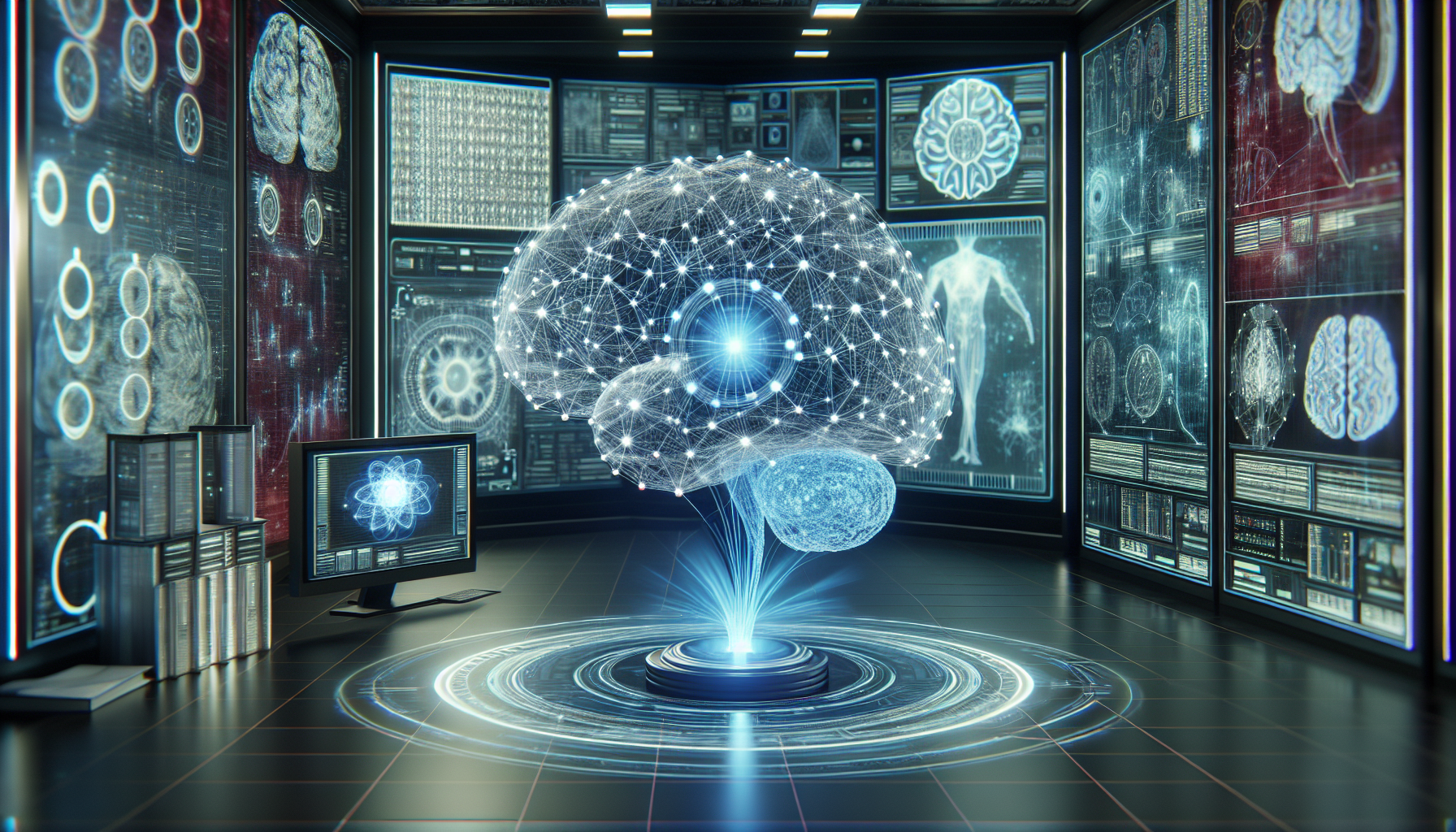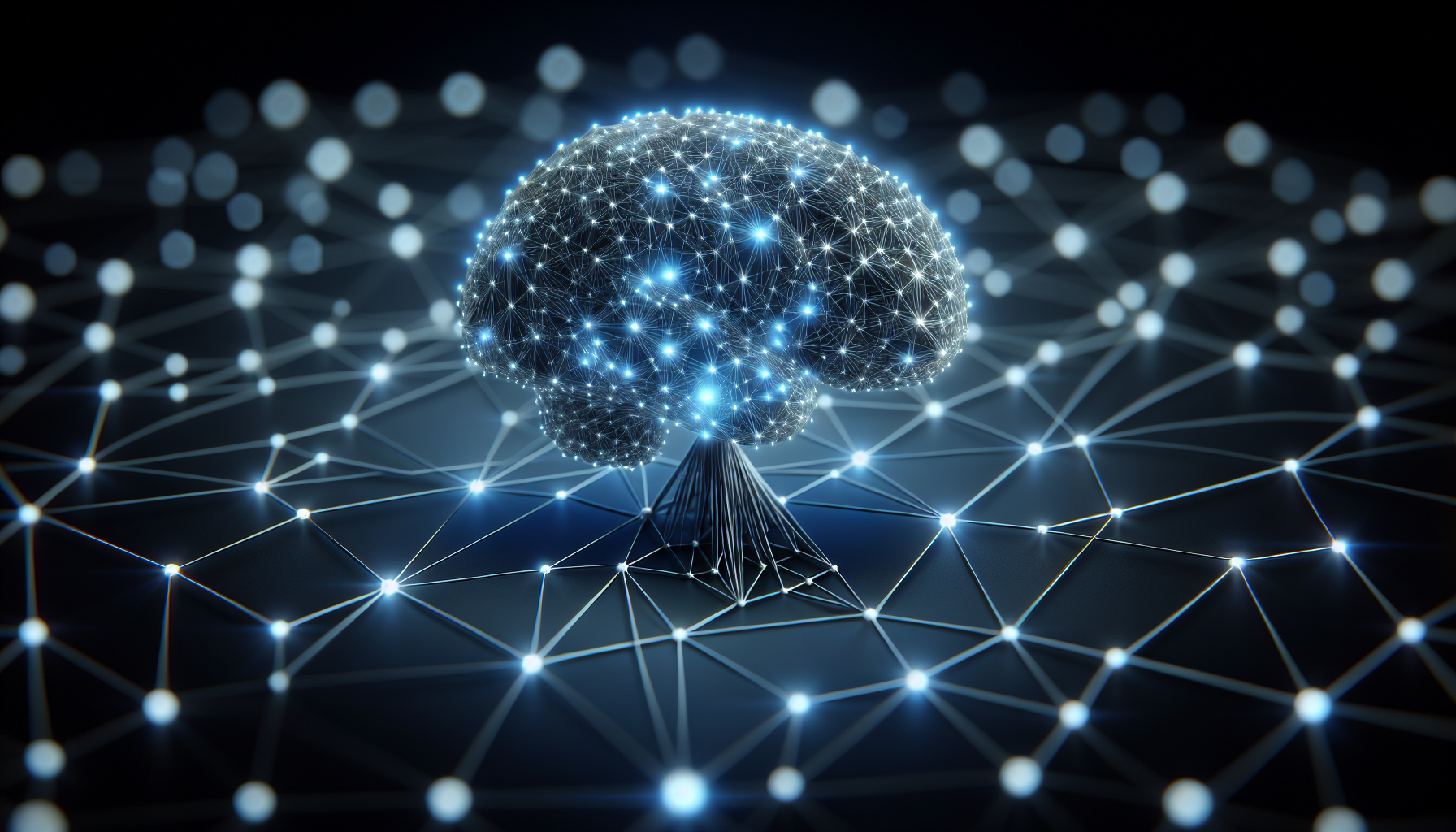Short Answer:
This AI Glossary aims to simplify complex AI concepts, including Machine Learning, Neural Networks, and Deep Learning. It covers essential applications such as NLP, Computer Vision, and the ethical use of AI, offering insights into the evolving landscape of AI technologies and their impact on various sectors.
Introduction & Background
As an attorney with over a decade of experience navigating complex transactions in real estate, venture capital, mergers & acquisitions, and private equity at prestigious law firms, I’ve witnessed firsthand the transformative impact of Artificial Intelligence (AI) across various industries. My journey from a legal expert to an educator at the University of Florida’s Fredric G. Levin College of Law, specializing in Entrepreneurial Law, has deepened my understanding of AI’s legal, ethical, and business implications. This unique blend of experience positions me as an authoritative voice on the subject, particularly on the integration of AI in the legal and business landscapes.
The AI Glossary I’ve compiled seeks to demystify the vast and intricate world of AI for professionals and enthusiasts alike. This glossary serves as a bridge, connecting complex AI concepts like Machine Learning, Neural Networks, and Deep Learning to real-world applications, such as Natural Language Processing and Computer Vision. It reflects a comprehensive understanding of AI’s capabilities and challenges, highlighting the importance of ethical considerations and the pursuit of Artificial General Intelligence (AGI). Through this work, I aim to illuminate the path for others to follow in the ever-evolving landscape of artificial intelligence.
Key Takeaways
- Artificial Intelligence (AI) encompasses various sub-disciplines including Machine Learning (ML), Neural Networks, and Deep Learning, aiming to create machines that can perform tasks requiring human intelligence such as speech recognition, learning, and problem-solving.
- Natural Language Processing (NLP) and Computer Vision are critical AI applications that aid in interpreting human language and analyzing visual content, respectively; whereas Data Science and Analytics involve using AI for extracting and analyzing data to inform strategic decisions.
- The advancement of AI technologies raises ethical considerations and the need for guardrails to ensure responsible use, while ongoing research in AI aims at achieving Artificial General Intelligence (AGI), which could lead to machines that emulate human intelligence across a vast range of tasks.
Understanding the Terminology: An AI Glossary
Artificial Intelligence (AI), once confined to the domain of tech enthusiasts and sci-fi enthusiasts, has now emerged as a mainstream discourse. It is a buzzword penetrating every industry, altering our everyday life. Primarily, AI is a vast computer science domain that aims to create intelligent machines capable of executing tasks that generally need human intelligence. It revolves around the development of systems designed to manage tasks like:
- speech recognition
- learning
- planning
- problem-solving
However, AI is a broad field with multiple sub-disciplines and associated notions. One of the most critical is Machine Learning (ML), a subset of AI that uses algorithms to learn from data and make informed decisions. Unlike traditional software, a machine learning model isn’t explicitly programmed for a specific task. Instead, it’s designed to learn and improve its performance over time as it’s exposed to more data.
However, AI isn’t just about machines learning and making decisions. It also aims to replicate human thought and learning processes. This is where Neural Networks come into play. These are computing systems inspired by the biological neural networks in our brains, designed to process information and learn through interconnected nodes. These nodes are organized in layers and adjust their connections based on the information they process, much like how our brains learn new concepts.
Machine Learning
The principle of machine learning, a method that allows machines to learn from data and make decisions without being expressly programmed for a specific task, lies at the heart of AI. This idea might sound a bit abstract, so let’s illustrate it with an example. Consider the Ordinary Least Squares (OLS) regression, a simple machine learning algorithm. The system learns to predict outcomes based on data patterns, without the need for detailed programming.
Machine learning is adaptable and can handle a variety of problem types. Some of the most common include regression, which forecasts continuous variables, and classification, which categorizes data into pre-defined classes. These capabilities make machine learning a powerful tool in many fields, from predicting stock prices to diagnosing diseases.
Nevertheless, machine learning is not a static domain. It is continuously evolving, persistently developing new techniques and algorithms. Among these, one stands out due to its complexity and potential: Deep Learning. This advanced technique structures algorithms in layers to create an ‘artificial neural network’ that can learn and make intelligent decisions on its own.
Neural Networks
The human brain is a complex network of neurons, each one processing information and evolving based on our experiences. Inspired by this structure, computer scientists developed artificial neural networks (ANNs), a key component of AI and Machine Learning. These networks consist of interconnected nodes arranged in layers. These nodes process information and learn by adjusting the strengths of the connections between them.
Understanding how machines learn necessitates grasping the notion of neural networks. It provides the basis for many machine learning models and algorithms, enabling them to mimic the way humans learn and make decisions. As such, neural networks are the cornerstone of many AI applications, from voice recognition to autonomous vehicles.
Furthermore, neural networks lay the groundwork for a more advanced learning technique – Deep Learning. Deep learning models use neural networks with many layers, hence the term “deep”. These models can capture complex patterns in data, making them incredibly powerful for many AI tasks.
Deep Learning
Deep Learning, a sophisticated AI technique and key term in the AI glossary, employs artificial neural networks to empower machines to learn and make intelligent decisions independently. It stands apart from traditional machine learning in terms of algorithm complexity, the extent of human intervention needed, and data requirements. Artificial neural networks designed to mimic the human brain’s biological networks, are central to the deep learning process. These networks allow for a more intricate and powerful learning process than standard machine learning models.
Effective training of deep learning models necessitates substantial amounts of training data. However, advancements like transfer learning enable the use of pre-trained models, reducing the data and computational power required. Deep learning exhibits complex and advanced evolution with capabilities like automatic feature engineering and a logical structure for data analysis akin to human reasoning. This provides significant advantages over classic machine learning algorithms.
Deep learning holds promise, with potential applications across various domains, such as natural language processing and computer vision. However, it also poses challenges, particularly in terms of computational requirements and the need for large amounts of data. As we continue to advance in hardware and algorithm development, we can expect to see even more impressive feats from deep learning models.
Natural Language Processing (NLP)
As humans, our medium of communication is language – a complex, nuanced system that traditionally poses challenges for computers to comprehend. However, with the advent of natural language processing (NLP), AI is getting better at understanding and interpreting human language. Deep learning is advancing NLP by tackling the intricacies of human language, such as varying contexts and accents.
NLP is the technology behind many applications we use daily. Virtual assistants like Amazon Alexa and Google Assistant rely on NLP and deep learning to interpret natural language voice commands and execute tasks. NLP also plays a crucial role in text classification, a task that involves the automatic understanding and categorization of unstructured text.
Nonetheless, NLP doesn’t only revolve around language comprehension, it also involves extracting valuable insights from vast text. This is where techniques like information extraction and intent classification come in. These techniques allow AI to detect specific details, like names and locations, within large texts and interpret the underlying purposes in text, benefiting areas like marketing and customer support.
Sentiment Analysis
Sentiment analysis is amongst the most intriguing applications of NLP. This technique utilizes NLP to identify emotional nuances in text and determine the positivity or negativity of opinions. For instance, businesses can use real-time sentiment analysis to monitor social media mentions, gauge customer reactions, and assess the overall perception of their company.
Sentiment analysis can also help businesses understand customer preferences and areas for improvement. By periodically analyzing customer reviews and feedback, businesses can gain insights into product features or customer service aspects that need enhancement.
Nonetheless, sentiment analysis is not flawless. Current methodologies grapple with detecting sarcasm and irony, both prevalent aspects of human language. Addressing these challenges is a focus area for future research in sentiment analysis.
Machine Translation
Machine translation, another application of NLP, has been in existence for a considerable time. It involves translating text from one language to another, and it’s made significant improvements over time to aid various aspects of business communication. While machine translation systems have improved significantly, they still face challenges. These include issues with terminological consistency and contextual understanding. These issues can confuse readers or result in inaccuracies.
Even in technical fields, machine translation must contend with high accuracy demands for specialized terminology. It also faces challenges related to translating subsidiary content such as images or code. Despite these challenges, machine translation continues to be an essential tool in the global business environment.
Computer Vision and Image Recognition

Just as NLP empowers computers to comprehend and interpret human language, computer vision facilitates computers in interpreting and analyzing visual content. Computer vision aims to replicate and automate aspects of the human visual system. It uses cameras, algorithms, and data to interpret visual content in a manner similar to the optic nerves, retinas, and visual cortex of humans. Some key applications of computer vision include:
- Object recognition and detection
- Image classification
- Image segmentation
- Facial recognition
- Gesture recognition
- Scene understanding
Computer vision has a wide range of practical applications, from self-driving cars to medical imaging to augmented reality.
Computer vision has numerous applications across various industries. In healthcare, it aids in disease detection and diagnosis through medical imaging. In automotive technology, it’s instrumental for autonomous navigation and obstacle identification in self-driving cars.
Despite the advancements in computer vision technology, it’s worth noting that it does not perfectly replicate human vision. Computer vision systems, a subset of a broader computer system, can tirelessly analyze vast quantities of visual data in a short time, which is essential for tasks such as automated defect detection in manufacturing. However, they require an extensive database of visual inputs for accurate and comprehensive analysis.
Pattern Recognition
Pattern recognition is a crucial element of computer vision. This is the ability of machines to identify patterns in data and use those patterns to make decisions or predictions. Pattern recognition can be described as an information reduction, information mapping, or information labeling process.
There are two primary forms of pattern recognition: explorative and descriptive. Explorative pattern recognition aims to identify data patterns in general, while descriptive pattern recognition categorizes detected patterns.
Pattern recognition has numerous applications. For instance, deep learning has enabled image colorization by adding semantic colors and tones to grayscale images automatically. Visual recognition powered by deep learning allows sorting and searching images based on content, such as faces or locations.
Robotic Process Automation
Another application of computer vision is Robotic Process Automation (RPA). RPA involves automating tasks that require visual understanding, thereby enhancing efficiency and accuracy in various industries.
For example, RPA systems like SentioScope, which track sports movements, rely on computer vision to process real-time visual inputs. This provides actionable insights into player movements and behaviors. In manufacturing, computer vision supports predictive maintenance systems by scanning and identifying potential issues. This minimizes breakdowns and reduces product defects.
AI Computer Vision endows RPA robots with the ability to ‘see’ and comprehend every element of an interface. This improves automation in dynamic interfaces such as those encountered in virtual desktop environments. With the incorporation of AI Computer Vision, RPA can interact with a multitude of interface types, encompassing VDI environments like Citrix, VMWare, and Microsoft RDP, as well as web and desktop applications.
Data Science and Analytics

Data Science, a multidisciplinary field, blends scientific methods, statistics, data analysis, and AI to extract and analyze data for multiple applications. Data scientists analyze vast datasets to identify patterns and derive information. This information helps in making strategic business decisions and enables businesses to swiftly adapt to market changes through real-time predictions and optimization.
The process of machine learning within the realm of Data Science includes a series of steps. These range from comprehending the business challenges to collecting and preparing data, and further to training and deploying models for predictive purposes.
The role of data in AI and machine learning isn’t confined to analysis. It also entails preserving the integrity of that data. Ensuring the accuracy and consistency of data forms the foundation of dependable AI predictions and business insights.
Structured and Unstructured Data
Within the realm of data science, data can be categorized as either structured or unstructured. Structured data is organized in easily searchable formats, such as databases. This organization allows it to be efficiently queried using straightforward algorithms or SQL queries.
On the other hand, unstructured data includes most forms of raw input data such as text, images, and audio. It lacks a predefined format, which poses challenges for collection, processing, and analysis. To analyze unstructured data, complex AI techniques like deep learning are often required.
However, unstructured data isn’t without its benefits. Storing data in its native format without enforcing a predefined structure allows for a broader range of use cases. This is thanks to its adaptability and the variety of file formats it supports.
Supervised and Unsupervised Learning
Based on the type of data they utilize, machine learning algorithms can be bifurcated into two main categories: supervised and unsupervised learning. Supervised learning involves training models on labeled data. In this case, both the input and the desired output are provided, allowing the algorithm to learn the relationship between them.
Unsupervised learning, on the other hand, deals with finding the inherent structure within unlabeled data. In this case, there are no predefined labels guiding the learning process.
While supervised learning is noted for its accuracy in predictions due to the structured guidance of labeled data, unsupervised learning can model more complex relationships. This is because it explores data without set categories, making it a powerful tool for certain AI tasks.
Advanced AI Models and Techniques

AI is a constantly evolving discipline, effectively creating an open-ended AI glossary, with the development of new models and techniques happening incessantly. Some of these advancements are so groundbreaking that they significantly shift the landscape of AI. One such advancement is Generative AI. Introduced in late 2022, Generative AI is capable of creating human-like text and graphics.
Another cutting-edge advancement is Quantum Computing. It has the potential to overcome the computational constraints of silicon-based hardware, promising significant advancements in AI’s processing capabilities.
As we explore the world of AI more profoundly, we come across intriguing concepts such as Large Language Models, Reinforcement Learning, and Quantum Computing. Each of these represents a significant leap in AI technology, offering new possibilities for how we interact with machines and how they learn from us.
Large Language Models
Large language models of the AI glossary, such as GPT-3 and ChatGPT, have brought about a revolution in the field of AI through natural language generation. These models can generate human-like text and are capable of performing a variety of language tasks, from engaging in dialogue to translating text.
However, despite these advancements, large language models still struggle with creative language elements. These include idioms, cultural references, and stylistic nuances, which require a level of creativity that algorithms have not yet achieved.
These models are undergoing swift progress, with regular updates and innovations extending the boundaries of text generation and language comprehension. As these models scale up, they may exhibit emergent behaviors, including unpredictability and social biases, which pose both potential applications and ethical risks.
Reinforcement Learning
Reinforcement learning is a genre of machine learning where an agent accrues decision-making skills by performing actions and receiving rewards or penalties from its environment. This approach to learning has been successfully applied in various industries, such as:
- Pharmaceutical development
- Cybersecurity
- Financial services
- Weather forecasting
In reinforcement learning, an agent learns to perform an action that maximizes a reward in a particular situation. Over time, the agent learns the best strategy, or “policy,” that maximizes its long-term reward. This process of trial and error, learning from mistakes, and slowly improving is similar to the way humans and animals learn.
Reinforcement learning is particularly effective in situations where there is a clear reward or penalty associated with an action. This makes it a powerful tool for solving complex problems that involve sequences of decisions, such as playing a game of chess or navigating a robot through a maze.
Quantum Computing
Quantum computing, an emerging and exciting field, harbors the potential to bring about a radical change in AI. Unlike traditional computing, which uses bits to process information, quantum computing uses qubits. These qubits have the potential to process information millions of times faster than traditional bits by representing both 1 and 0 simultaneously.
The integration of quantum computing with AI and machine learning, specifically reinforcement learning, is predicted to drastically enhance the speed, efficiency, and accuracy of these models. Pioneering efforts such as:
- Google’s TensorFlow Quantum (TFQ)
- IBM’s Qiskit
- Microsoft’s Quantum Development Kit (QDK)
- D-Wave Systems’ Leap
illustrate active research into creating hybrid quantum-classical models. Partnerships like IonQ and Hyundai’s indicate early practical applications of Quantum AI.
IBM’s research into quantum algorithms suggests they could hold significant advantages for AI. They potentially offer accelerated processing speeds and enhanced capabilities for complex problem-solving in AI applications.
AI Ethics and Responsibilities

As we expand the limits of what’s achievable with AI, we must not forget that great power carries great responsibility. In the absence of stringent government regulations, businesses and industry leaders are responsible for creating ethical guardrails for AI. These guardrails are designed to prevent misuse and ensure ethical practices.
Privacy-by-design, one of the critical aspects of responsibly developing AI technologies including AGI, is of paramount importance. This approach involves designing AI systems to prioritize and protect user privacy from the outset.
In addition to privacy, it’s also important to consider the potential for emergent behavior in AI systems. This refers to unpredictable or unintended capabilities that may arise. High data quality and specific query phrasing can lead to emergent behaviors in AI models with fewer parameters.
Guardrails
Guardrails form an integral part of AI system design, and the AI glossary. They ensure that AI systems inherently adhere to human values and exhibit ethical and safe behavior. For ethical compliance, AI algorithms should be meticulously designed to collect data exclusively from sources that have provided consent.
Guardrails aren’t just about limiting the actions that AI systems can take. They also prioritize the establishment of cooperative data sources and the production of accurate responses from AI systems.
By implementing guardrails, organizations can ensure that their AI systems operate within acceptable ethical boundaries. This not only helps protect user data but also improves the overall reliability and trustworthiness of the AI systems.
Emergent Behavior
Emergent behavior in AI systems pertains to unforeseen or unintended capabilities that may emerge. Some examples of emergent behaviors in AI models include:
- High data quality and specific query phrasing can lead to emergent behaviors in AI models with fewer parameters.
- Chain-of-thought prompting in AI models can elicit previously unidentified emergent behaviors, showing that the method of prompting greatly affects AI capabilities.
- Scaling AI models up or the maturing of internal statistics-driven processes through reasoning heuristics can also lead to emergent behaviors.
These emergent behaviors highlight the complexity and potential of AI systems.
Emergent behaviors in AI systems pose both opportunities and challenges. They can lead to unexpected breakthroughs and advancements. However, they can also result in unpredictable and potentially harmful outcomes. Therefore, it’s crucial to monitor and manage emergent behaviors in AI systems to ensure they operate safely and effectively.
Turing Test and the Future of AI
Proposed by Alan Turing in 1950, the Turing Test is a method used to discern if a machine can emulate human intelligence. The test involves a human judge having text-based conversations with a human and a machine without knowing which is which. If the judge cannot tell them apart, the machine passes the test.
Even with its limitations, the Turing Test continues to be a pivotal benchmark in AI research. It encourages the pursuit of machines that can mimic human conversation effectively. However, no AI has yet passed an undiluted version of the test.
The ultimate goal of AI research is to achieve Artificial General Intelligence (AGI) – machines capable of emulating human intelligence across a range of tasks. Passing the Turing Test would signify a significant stride towards attaining AGI, indicating a machine’s successful mimicry of human cognitive processes.
Turing Test
The Turing Test, formulated by Alan Turing, serves as a method to ascertain if a computer can manifest human-like intelligence. In the Turing Test, a machine’s ability to exhibit intelligent behavior is assessed not just by correct answers but by maintaining a conversation indistinguishable from that of a human.
Despite significant efforts, such as the competition with a $100,000 prize offered by Hugh Loebner in 1990 and attempts like the chatbot Eugene Goostman in 2014, no machine has yet passed a pure form of the Turing Test.
Passing the Turing Test would mark a significant milestone in the field of AI. It would indicate that we have created a machine capable of mimicking human cognitive processes to such an extent that it can engage in a conversation indistinguishable from a human.
Artificial General Intelligence
Artificial General Intelligence (AGI) pertains to machines capable of replicating human intelligence. They are capable of understanding, learning, and applying knowledge in varied situations. The evolution of AI has progressed from narrow AI, which is designed for specific tasks, to the concept of AGI, which aims to replicate the general problem-solving capabilities of humans.
The future of AGI could pave the way for AI to outdo humans in all cognitive tasks, leading to substantial societal and industrial transformations. For instance, AGI could enhance the healthcare sector by diagnosing diseases and suggesting medications without human intervention.
However, the rise of AGI might necessitate a rethinking of job roles and skills in the workforce, as automation could replace certain tasks currently carried out by humans. Despite these challenges and uncertainties, the pursuit of AGI represents one of the most exciting frontiers in AI research.
Summary
In this short AI Glossary, we’ve traversed the landscape of machine learning, delved into the intricacies of natural language processing and computer vision, and touched upon the world of data science. We’ve explored the cutting-edge developments in advanced AI models and techniques, and pondered the ethical and responsible use of AI. Lastly, we’ve considered the future possibilities of AI, looking at the Turing Test and the prospect of Artificial General Intelligence. The journey of AI is ongoing, with the destination still on the horizon and an AI glossary continuously expanding. As we continue to push the boundaries of what’s possible with AI, it’s clear that this is only the beginning. AI is not just shaping our future; it’s redefining it.
Frequently Asked Questions
What is the terminology for artificial intelligence?
The terminology for artificial intelligence is “AI,” which stands for the simulation of human intelligence processes by machines or computer systems, including capabilities such as communication, learning, and decision-making. The AI space is comprised of many other key terms, many of we covered in this AI glossary.
What is a GPT in AI?
In the AI glossary, GPT refers to “Generative Pre-trained Transformer” models, which are neural network-based language prediction models that analyze natural language queries and predict the best possible response based on their understanding of language.
What is AI in 50 words?
AI, or Artificial Intelligence, is the theory and development of computer systems that can imitate human intelligence and perform tasks such as visual perception, speech recognition, decision-making, and language translation. It has revolutionized technology.
What is an AI glossary?
In conclusion, the AI glossary encompasses terms related to machine intelligence, human behavior mimicry, and specific examples like Google spam filters and Amazon preference recommendations. These terms are essential for understanding and discussing artificial intelligence.
What is the Turing Test, and why is it important?
The Turing Test is a method for determining whether a computer can demonstrate human-like intelligence, developed by Alan Turing. It is important because it serves as a key benchmark in AI research.



